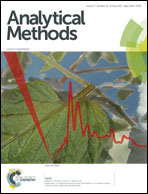Age-related changes in functional connectivity between young adulthood and late adulthood†
Abstract
Recently, age-related changes in functional connectivity have gained more attention for investigating functional changes across development. In this study, we examine functional connectivity, as derived from resting state functional magnetic resonance imaging (R-fMRI), in 90 cortical and subcortical regions in two healthy groups in young adulthood (ages 18–28 years) and late adulthood (ages 63–73 years). Comparing the processes for constructing a functional network, we found that the network in young adulthood was more easily fully connected than that in late adulthood, indicating that the central regions, frontal lobe, parietal lobe and limbic lobe possibly occupy more resources in late adulthood. We confirmed that the brain in both young adulthood and late adulthood had a “small-world” organization, and that there was a further loss of small-world characteristics in late adulthood. Additionally, we found that late adulthood exhibited a more social-like organization of the brain functional network than young adulthood. Furthermore, the connectivity density showed a general decrease in most brain areas, but only the temporal lobe and occipital lobe showed a decrease in connectivity strength in late adulthood. Conversely, the parietal lobe showed an increase in connectivity density in late adulthood. Our study provides additional support for elucidating the functional changes of the brain across development, and characterizing these changes will lead to a better understanding of the cognitive decline that occurs with advancing age.


 Please wait while we load your content...
Please wait while we load your content...